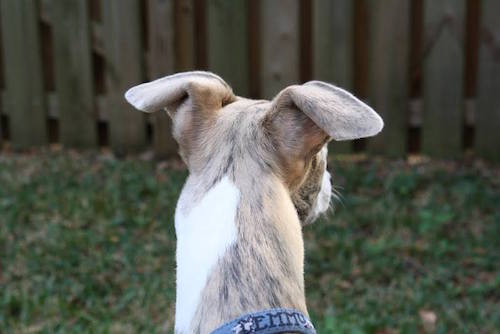
Purebred dogs are loved by the average guy and royalty, alike. Owners come from all walks of life, and are united in having fallen in love with the traits of the breed we live with. Some of us show (off) our dogs at a dog show, and a lot of us don’t. So why do we share information that may be regarded as unimportant if a dog isn’t being shown?
Because each of us is a conservator of our dog’s breed whether they are a show dog or not. We are the breed’s ambassadors and torch bearers, and we’re responsible for protecting it. This means we should know its history, its purpose, and have a passing knowledge of what’s considered ideal in the breed. Knowledge is power, and we want all of us to be powerhouses so we can safeguard our breeds from substandard breeders, or people who think that breeding purebred dogs is simply putting together two dogs of the same breed when nature beckons and voila, purebred puppies.
Flying ears, for example. Who doesn’t love the epic ears on a Pumi or Papillon? The same ears on a different breed, however, isn’t correct, and we call those
“flying ears.” Instead of hanging close to the cheek as required by its breed standard, these ears stick out or “fly away” from the dog’s cheeks. The Whippet is such a breed. From its standard: “Rose ears, small, fine in texture; in repose, thrown back and folded along neck. Fold should be maintained when at attention. Erect ears should be severely penalized.”We don’t love Whippets less if they have ears that are ready for take-off, but neither would we breed them without compelling reasons. That said, in some breeds, this type of ear may be correct when the ears are at attention.
Do you know what’s appropriate for your breed?
Photo credit: W. Montroy

Well, I have whippets, and what you said is true. I don’t consider ears to be a major decision maker in breeding. Health concerns always come first. That said, most whippets seem to have correct ears and I certainly wouldn’t want to contribute to a minor problem by breeding more of them. So the bitch would have to be of excellent quality otherwise for me to breed her. There’s a saying among the rack breeders that “they don’t run on their ears.” Very true, but a correctly structured ear is critical to that sweet but alert expression. I love to watch ears when a whippet spots prey The ears stayed tipped over, but are drawn up tightly on the head so that they touch each other, or nearly do. We call it the “hunting hat.”
My previous breed was collies and oh, the stress that ears gave us! We propped and glued and taped and sprayed and even weighted them in the ring (against AKC rules, obviously) and still sometimes ended up with bunny ears. At that time, “natural” ears were not the norm. That was 25 years ago though and today may be entirely different. I read somewhere at the time that the problem was that the collie ear is halfway between two very natural ear types: erect and drop. To reach a point where the ear is erect at the base but tips over at the top is a very difficult feat. Have no idea if that is true but it sounds reasonable! I’d love to hear from current collie and Sheltie breeders about this. Are natural ears as hard to come by today as they were 25 years ago?
A fabulous comment, Shary, loaded with information and insight. You ask a great question at the end, let’s see if we can get some responses!
I have a Pedigree Whippet who has litter siblings that qualified for Crufts on their first outings- and then there is my lovely girl who has magnificent ears that make people say ”Is she a Pharoah Hound? – out of her litter, she is the only ”Hunter”’ to date, despite being the smallest girl. It seems that when ears were being
Her large ears are extremely endearing, and she does ‘therapy’ work with adults – she is calm and so sweet.
Maybe her beautiful ears capture the sounds of prey-
I am very fond of her ears.